Have you ever considered how different today's sport-fishing is compared with fishing in years past? Sure you have, just like me.
Being an avid history buff, I am amazed about the many significant changes in fishing that have occurred during the past century, changes never envisioned by the anglers of yesteryear.
So, you probably know that Thomas Edison invented the light bulb, Eli Whitney invented the cotton gin, and Mother Nature invented Baja's Cortez for all saltwater anglers, but do you know what these men invented?
9 men who changed the way we fish today.
Some of the most significant developments relate to the equipment we use. Our boats have changed. Our rods and reels have changed. Our lures have changed. And we have many more accessories that give us distinct advantages when fishing.
I'm willing to bet, however, you have no idea who invented products you probably use quite often, things such as the bass boat, the foot-controlled trolling motor, the spin-casting reel and the plastic worm. Most of us never think about it. But had it not been for a small fraternity of industrious, forward-thinking men, we might not be able to enjoy fishing to its fullest, the way we do today.
Here are the stories of nine such men, anglers all, whose creativity and revolutionary thinking helped usher in new eras in sport-fishing.
HOLMES THURMOND

It began in a garage in Marshall, Texas, in 1948. A well-rounded fisherman named Holmes Thurmond decided to design a better boat, one that wouldn't be pushed around by the wind. Using pieces of marine plywood, he built a unique 13-footer with a low profile, wide bottom and inward-sloping sides. This inimitable little craft, dubbed the "Skeeter" by locals because of its long, needle-shaped bow, was the forerunner of today's modern bass boats.

Would you believe this is the forerunner of today's modern bass boat, invented by Mr. Holmes Thurmond, the man at left.
Holmes's sleek, fast boat immediately caught the attention of Texas and Louisiana fishermen, and lots of them wanted one, too. Holmes built them one at a time in Marshall and sold them through Reeves Marine in Shreveport, Louisiana. Then in 1961, the Stemco Corporation purchased the design and moved the operation to Longview, Texas. Soon after, they made the first bass boat from fiberglass, a huge leap forward in performance and durability. And soon, Skeeter boats were buzzing around lakes and rivers nationwide.
Holmes Thurmond designed a little wooden boat that was remarkably stable and very fast. People would say his boats whipped around the lake like a little mosquito or "Skeeter" for short and this is what is known to be the very first bass boat built in 1948. Thurmond was born in 1894 and passed away in 1970.
During the 60-some years since Thurmond made that first Skeeter, the company he founded has introduced many other 'firsts', including the first V-bottom bass boat and the first bass boat rated for 150 horsepower. And yet the man who started it all remains relatively unknown, despite the enormous way he changed fishing.
R.D. HULL

When R.D. Hull was a kid learning to fish in Snyder, Texas, he was continually picking out backlashes in the bait-casting reels of the time. He resolved the problem by having younger brother Ott walk around the pond they fished and drop his fishing plug in the water. He then could retrieve the lure without problems, but that only worked until Ott wised up.
Hull grew up to be a watchmaker and tinkerer, and decided he should invent a reel that wouldn't backlash. He solved the problem while watching a grocery clerk pull string from a large fixed spool to wrap a package. A reel with a fixed spool would be impossible to backlash, he thought, so he set out to make one.
In 1947, Hull showed his prototype to officials at Tulsa, Oklahoma's Zero Hour Bomb Company. The company produced explosive charges for oil drilling, not fishing tackle, but the men, intrigued by Hull's idea, sent the inventor home to make a working model. Hull returned with a handmade reel that was tested by company employees who were avid anglers. One tied his keys to the line and sent a cast flying high over the building. Everyone was impressed.
Hull was hired on the spot and set to work improving the reel's design. In June 1949, the first 25 'Standard' fishing reels came off the assembly line. They were an immediate hit with fishermen, and the company, which later changed its name to Zebco, began selling them by the thousands.

R.D. Hull's reel, which later evolved into the Zebco 33 spin-cast reel, changed forever the way people fished. Before the inventor died in 1977, more than 70 million Zebco reels had been sold, and Hull had been granted 35 U.S. patents.
NICK CREME

In 1949, Nick Creme was experimenting with vinyl mixtures heated on his kitchen stove. He cooked up one combination that, when added to molds he made from live night crawlers, produced the first plastic worm that looked and felt soft and alive .. and stayed that way when exposed to air. That first lure, the "Wiggle Worm", was sold by mail in 1951 at a price of $1 per five-pack. A distributor at a Cleveland sports show sold 9,600 packs in just a few days.
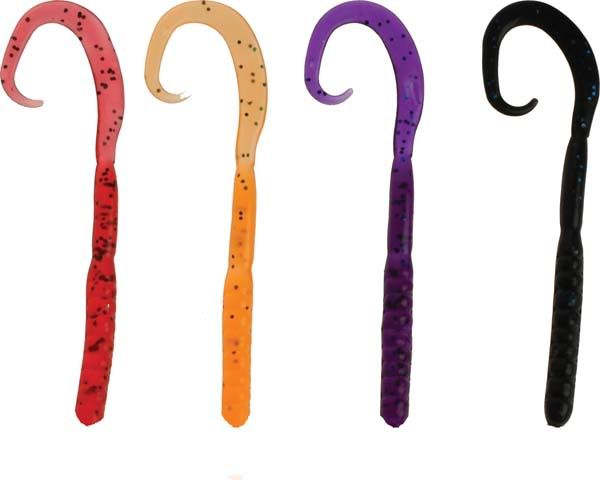
Demand for the lures soared, and Creme had to move his fledgling company from its small Ohio quarters to a larger plant in Tyler, Texas, where he endeared himself and his products to America's anglers. He was among the first manufacturers to sponsor pro anglers, signing Bill Dance and John Powell as spokesmen for his worms. And he was the first to offer slip-sinkers in the late 1960s.
Creme died in 1984, but the company bearing his name continues doing business from Tyler, Texas.
DARRELL LOWRANCE

In the 1950s, fishing was largely a hit-and-miss proposition. Advances in tackle technology had improved anglers chances, but 'the one that got away' continued to be a popular refrain until Darrell Lowrance and his father, Carl, introduced portable sonar to the sport.
LOWRANCE'S LITTLE GREEN BOX WAS THE FIRST PORTABLE SONAR - (FISHFINDER).
First introduced in 1957, the Lowrance Fish Lo-K-Tor was the first transistorized, portable sportfishing sonar for the recreational market. For the first time and for an investment of only $150, fisherman could use the fish locator to find fish and their exact depth. This revolutionary sonar unit, that became affectionately known as the "Little Green Box" by anglers, also enhanced boating safety by providing depth readings and information about underwater obstructions and bottom contour changes.
I still have my original 'Little Green Box' that I bought for my 16ft Lund boat in 1964. Here it is sitting on the console of the Lund while docked at a fishing lodge in Northern Saskatchewan at Lac La Ronge, where we were catching deep-water lake trout by spotting them and structure on the Green Box...quite an invention!...and produced mucho results for us fishermen.
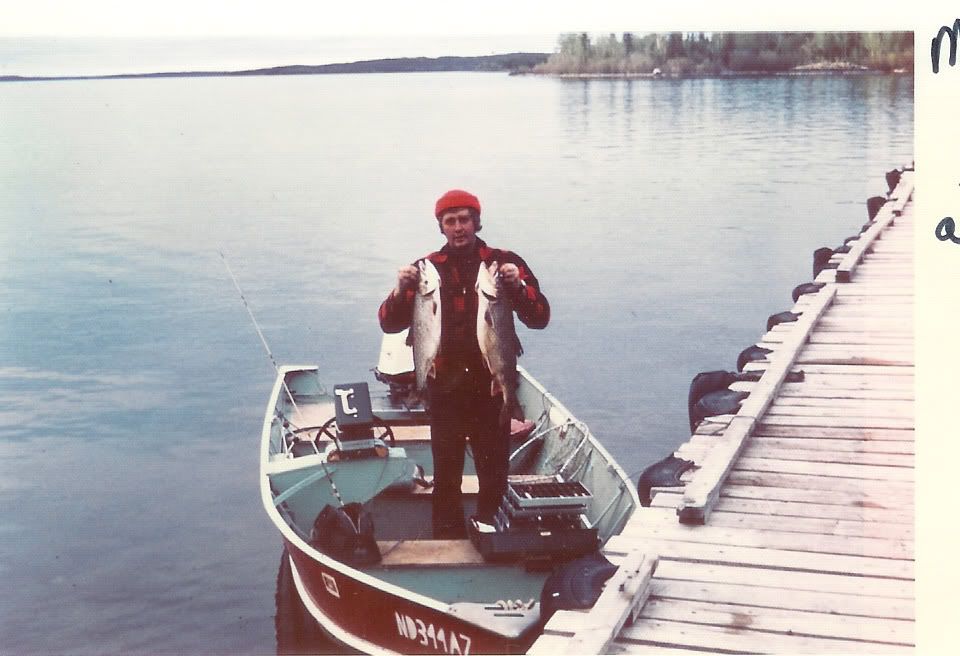
Carl Lowrance learned about sonar in the Navy. Using newly developed transistor technology, he reduced the size of once-bulky units so they could be mounted in small boats. The next step was reducing the length of the ultrasonic signal sent and received by the transducer .. the pulse length .. so the sonar could detect not just large objects like submarines, but fish as well. Darrell Lowrance, then a freshman at the University of Arkansas studying math and physics, managed to reduce the pulse length to a mere 1 foot, small enough to identify larger fish. And by 1956, the Lowrances were ready with their first unit, dubbed the Fish Lo-K-Tor.
The family incorporated their business as Lowrance Electronics in 1958, and soon began marketing the "Little Green Box" sonar that revolutionized sport fishing. Darrell became company president in 1961. During his tenure, he received numerous patents while guiding Lowrance to several breakthroughs in marine electronics technology, including the first computerized paper-graph fishfinder in 1982, the first high-resolution liquid-crystal display in 1985, and the first marine electronics with memory card utility in 2000. The company he helped found is now part of Navico, the world's largest marine electronics manufacturer.
This photo shows my Lowrance paper graph on my high-speed tri-hull in Baja of 1984. It did the deed quite well.
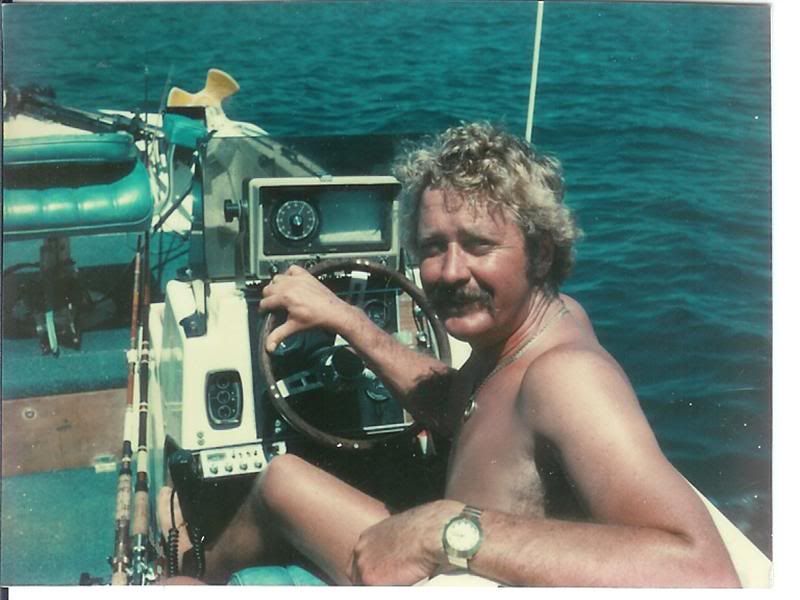
TOM MANN
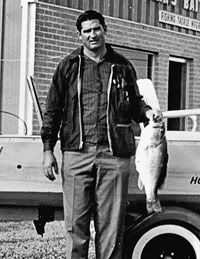
A native of Penton, Alabama, Tom Mann was born Sept. 16, 1932, and grew up loving to fish. His accomplishments in the world of angling made him one of the most familiar fishing personalities in America during his 71 years.
In 1956, Mann bought $5 worth of polar-bear hair and some hooks, created some molds and started making jigs. Almost every lure he made, he sold to friends, and soon he was making more money doing that than he did at his regular cotton-mill job. His wife, Ann, started helping him paint jigheads at the kitchen table, while he tied them. The demand for the lures grew so great, tackle sellers everywhere wanted them, and Mann's Bait Company, which would later grow into a multi-million dollar enterprise, was born.
In 1960, Mann became an Alabama game warden, but he continued making lures, including a brand-new one that would become one of the best-selling bass-catchers of all time. The top man in Alabama's statehouse at the time was governor George C. Wallace, and it was from the "boss" that the Little George tailspinner got its name.
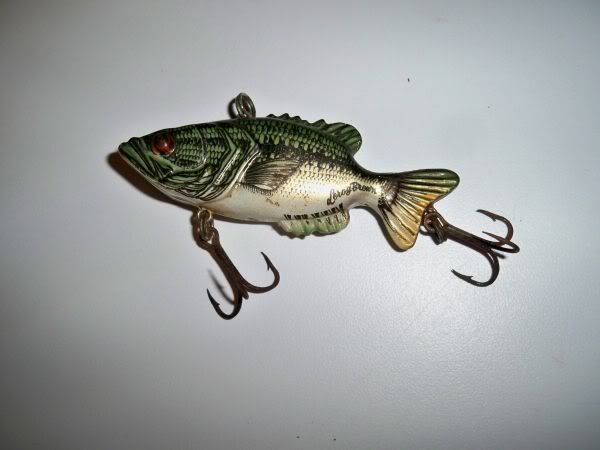
Other lures Mann invented included the Mann-O-Lure spoon, the Wooly Bully spinnerbait, the Deep Pig crankbait and most famous of all, the Jelly Worm, a soft, fruit-scented lure that became the No. 1-selling plastic worm of all time. Mann also began experimenting with fish-finding technology, ultimately developing and patenting the Hummin'bird depthfinder. He went on to become a book author, TV show host and an early star on the BASS Tournament Trail, winning two events and qualifying for seven Bassmaster Classics between 1971 and 1978.
ELWOOD "BUCK" PERRY
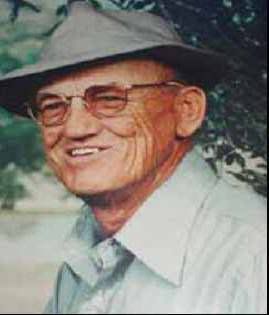
Born in 1915, in Hickory, North Carolina, Elwood "Buck" Perry grew up fishing on Lake James. It was there that he observed things that would lay the groundwork for his pioneering theories about fishing. He believed the natural "home" for most game fish was not in the shallows, as most people thought, but in deep water, and that once or twice daily, fish moved from the depths to the shallows to feed. Knowing the particular bottom features the fish followed as they moved could, he believed, increase an angler's catch year-round.
Designing an innovative lure he could fish at all depths was Perry's key to proving his theory. He called it the "Spoonplug" and patented it in 1946. Perry used the lure to teach anglers where and when to fish, but it wasn't until 1957, when Perry's fishing exploits on Lake Marie (supposedly a "fished-out" body of water) were featured in newspapers, that Perry gained recognition and the Spoonplug craze was born.

In 1984, Fishing Facts editor George Pazic wrote: "Perry started the whole modern era of freshwater sport-fishing. He is known as the 'Father of Structure Fishing,' and his discoveries and teachings have brought pleasure and success to millions of anglers that never even heard his name."
Perry passed away in 2005, but his groundbreaking techniques are still being taught worldwide.
G.H. HARRIS
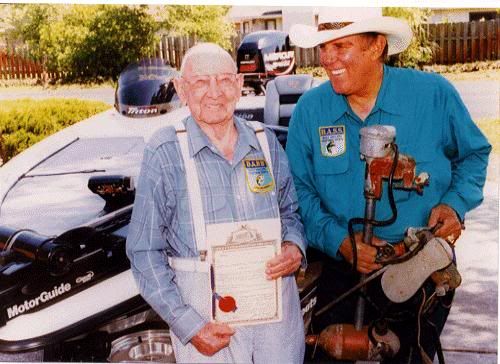
Many fishermen take for granted the everyday use of the foot-controlled trolling motor. But "hands-free" fishing was still a dream until the early 1960s when a Jackson, Mississippi, building contractor named Garrett H. Harris made it a reality.
In 1961, Harris, tired of sculling his fishing boat, began wondering if he could develop a better electric motor than the SilverTrol he owned, invented some 30 years earlier. The SilverTrol was awkward to use because it required turning and steering by hand. Harris wanted something he could operate with his foot so it didn't distract from his fishing.
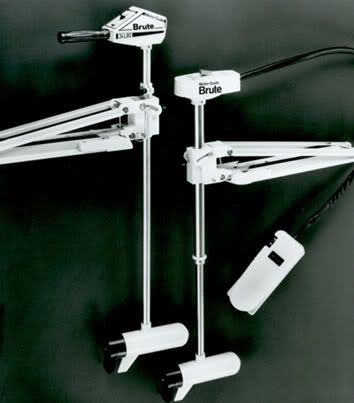
Harris' tinkering led to the development of a spring-loaded, foot-operated direction control he could use to steer his boat. When he would take his foot off the pedal, the spring returned the motor to its straight-ahead position. Local fishermen liked what they saw and began buying the handmade trolling motors.
When Harris became friends with Dick Herschede, owner of a Mississippi grandfather clock company, his invention finally reached the masses. Herschede struck a deal with Harris to build and sell the motors, which they called the "Guide-Rite." Improvements came rapidly, including rack-and-pinion steering in the mid-1960s that made the directional control more sensitive and reliable. Thrust was a whopping 10 pounds.
Eventually, the product's name was changed to the moniker now known by anglers everywhere: MotorGuide. And the rest, as they say, is history.
DAVE WHITLOCK
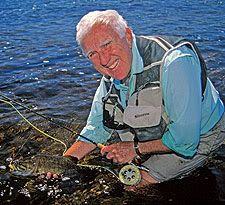
It's cliche to call anyone a legend, but if that term ever truly suited an individual, it fits Dave Whitlock. The contributions this man has made to fly-fishing have been phenomenal.
Whitlock was born in Muskogee, Oklahoma, in 1934, and started fly-fishing streams in his home state at around age 9. He was tying his own flies at age 12 to support his growing interest in the activity, and remained self-taught until age 18, when he learned by watching other tiers in a Montana fly-fishing shop. In later years, this lifelong fascination with fly-tying led him to create many new patterns widely used today, including Whitlock's Matuka Sculpin, the Red Fox Squirrel Nymph, Whitlock's Sheep Minnow Series, the Whit Hairbug and Dave's Diving Frog.
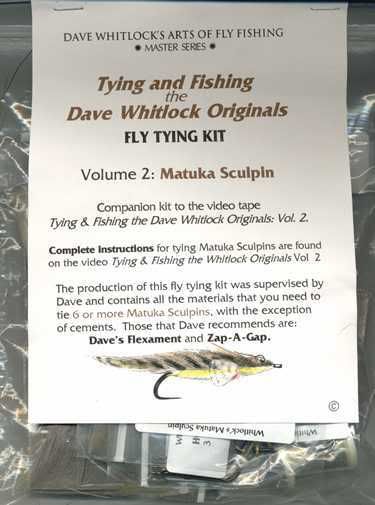
Whitlock's talents as a writer, artist and teacher also became world-renowned. Since resigning from his job as a research chemist in the 1970s, he has written, co-authored and/or illustrated dozens of books, created numerous fly-fishing instructional videos, directed the L.L. Bean Fly Fishing School, and, with his wife, Emily, founded his own fly-fishing school on the renowned White River in Arkansas. He also invented the Whitlock-Vibert Box, a unique, in-stream fish-egg incubator/nursery device used worldwide to help create, improve and preserve trout and salmon populations.
Today, Whitlock lives with his wife, Emily, near Tahlequah, Oklahoma. Certainly, his many accomplishments have earned him a place among America's legendary fishermen.
FRED YOUNG
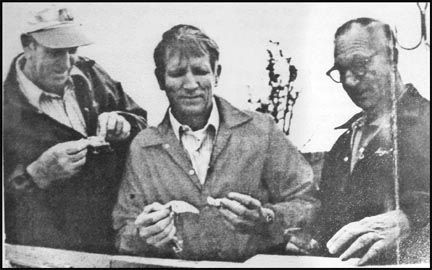
Fred Young is far right.
Back in 1967, laid up in a body cast after an accident at work, Oak Ridge, Tennessee, angler Fred Young started hand-carving crankbaits at home, hoping to come up with a model that duplicated the fast, tight wiggle of a fleeing baitfish. He experimented constantly with body materials, whittling plugs from cedar, pine, poplar and redwood, but found that balsa gave the plug the action he desired. He tried different lip materials, too, using emery boards, paint-can lids and aluminum, but found that pieces of old circuit board worked best.
Fred's burly brother Otis tested the plugs and gave Fred ideas for improvement. It wasn't long until they perfected a bulbous, short-lipped lure that wore the fish out. Later dubbed the "Big O" after Otis, this crankbait quickly gained a cult following for its uncanny ability to catch big bass. High-stakes bass tournaments were in their infancy then, and when several pros with Tennessee connections began winning big bucks on Big Os, those hand-carved wonders became such a phenomenon that some bass-fishing entrepreneurs introduced a rent-a-lure program, charging $25, plus an equal insurance deposit, for a one-day rental. It's estimated that Fred hand-carved around 3,700 of the original Big Os, most of which sold for $10 to $15 apiece.
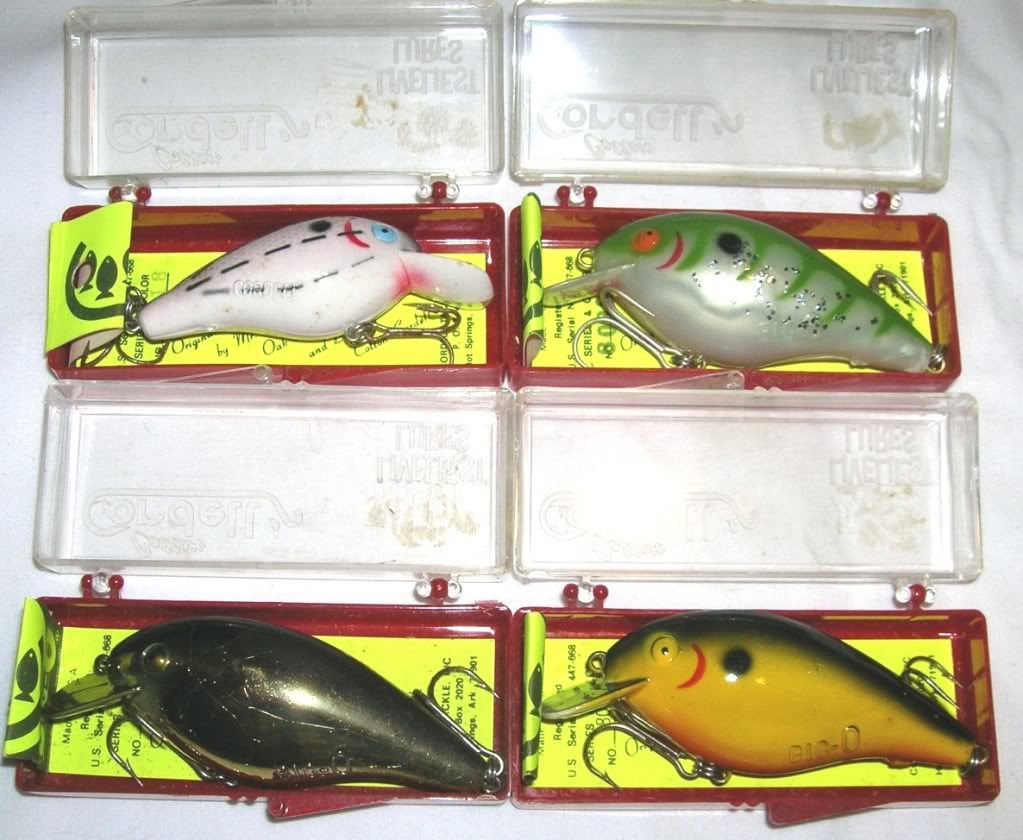
Big Os were in such demand, it was inevitable that a lure company would want to start mass-producing them. Cotton Cordell bought the patent in 1973, and Young oversaw their design of the plastic Big O. During the 12 months after the lure first appeared in the company's catalog, the manufacturer sold 1.3 million Big Os.
In coming years, other manufacturers would cash in on the "alphabet plug" craze. Eventually, everybody in the industry would try to duplicate the Big O. But Fred's version, still sold today, is the one that started it all.
AND....THOSE ARE 'SOME' OF THE MEN WHO CHANGED THE WAY WE FISH...FOREVER!
ANOTHER FOR ME WAS BAJA'S LOCAL MANUEL DIAZ OF COYOTE BAY IN 1971, WHO TAUGHT ME TO "READ THE SKY AND MOON" FOR WIND AND FISH ACTIVITY.
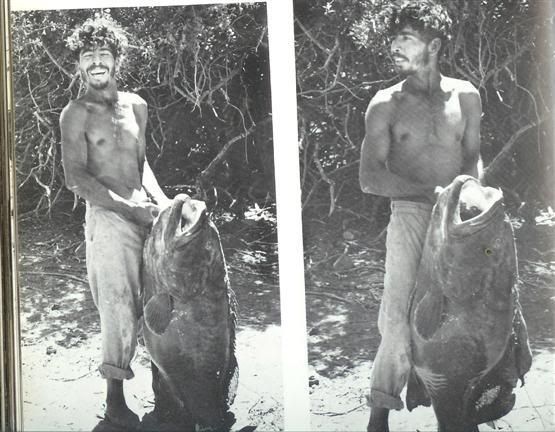
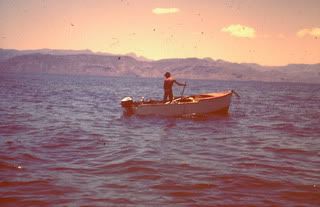
Manuel Diaz in his panga, Coyote Bay 1960s
MIL GRACIAS TO ALL OF THESE TEACHERS!
They have all helped to add to my fishing lure collection board..and my favorite walleye lure.


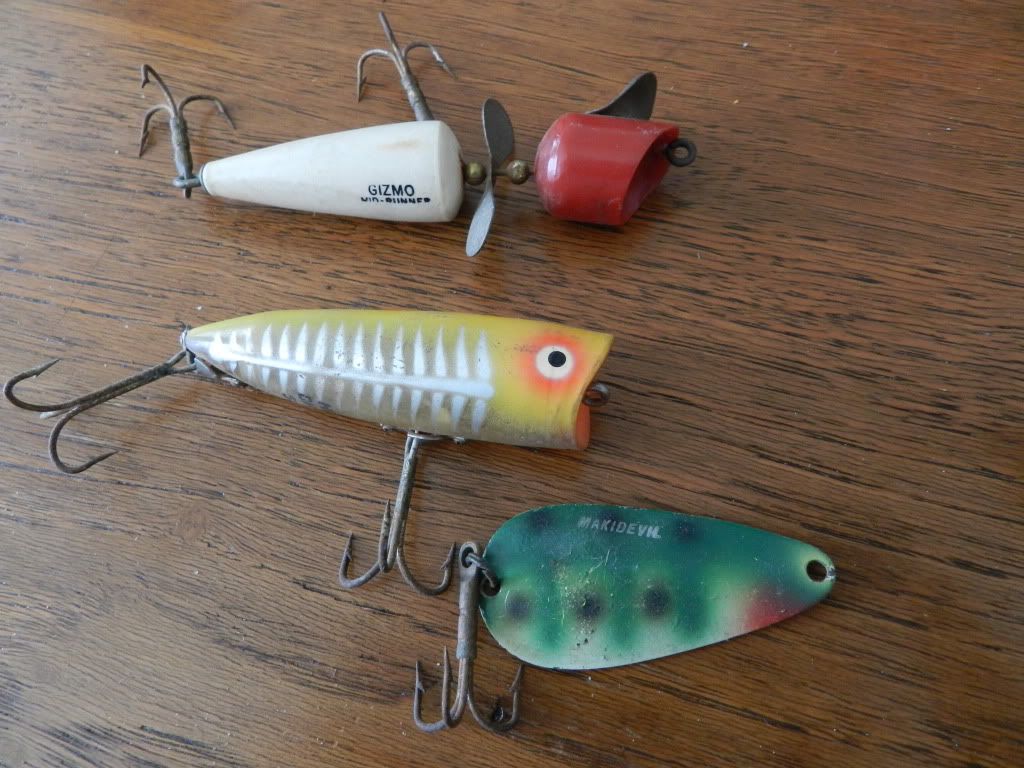









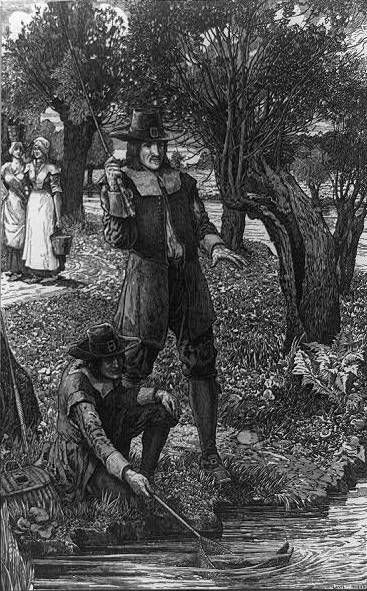

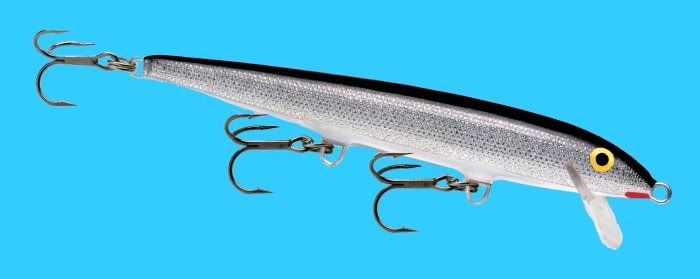

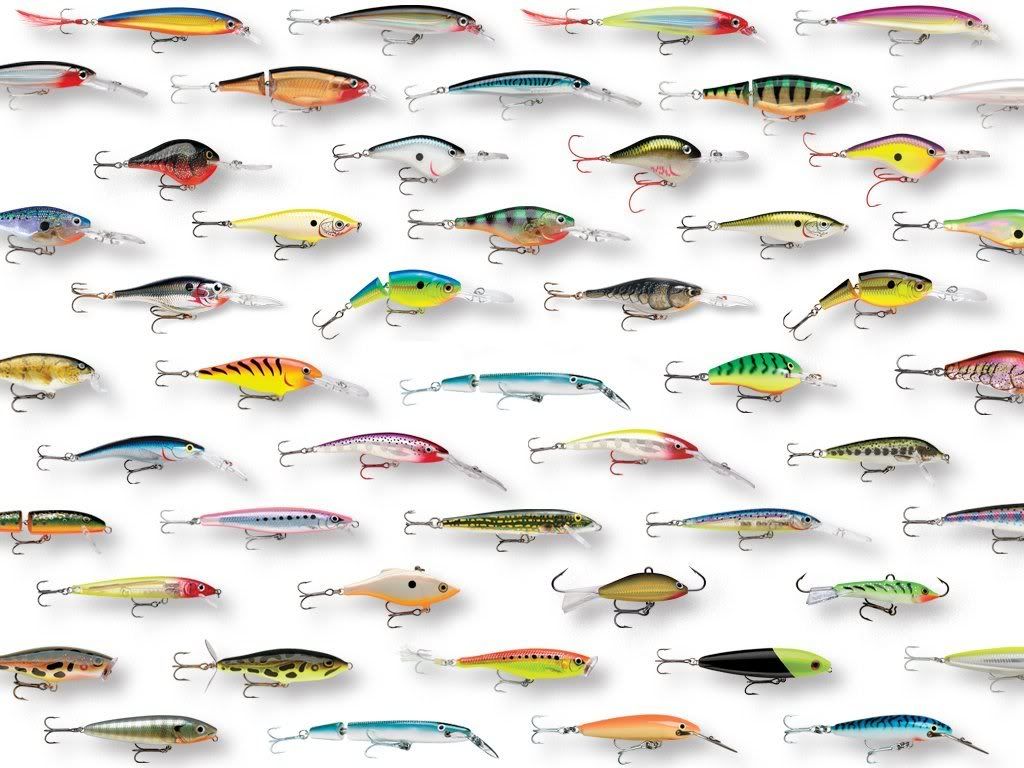

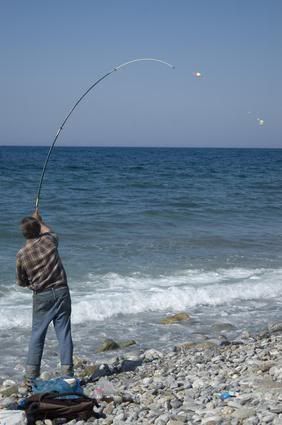
 probably the most successful lure
ever made.
probably the most successful lure
ever made.

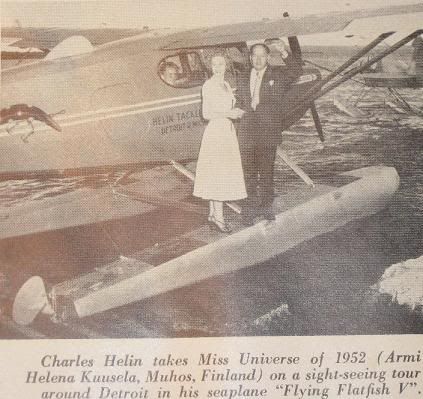

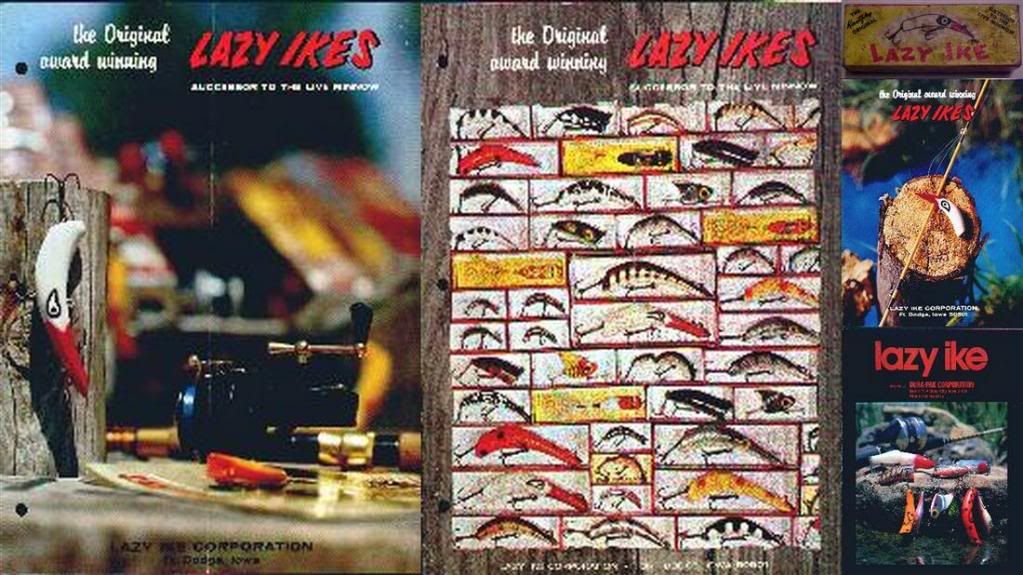

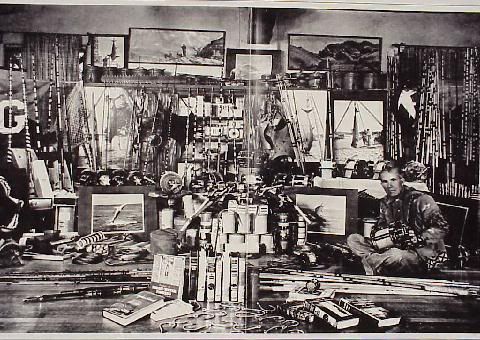
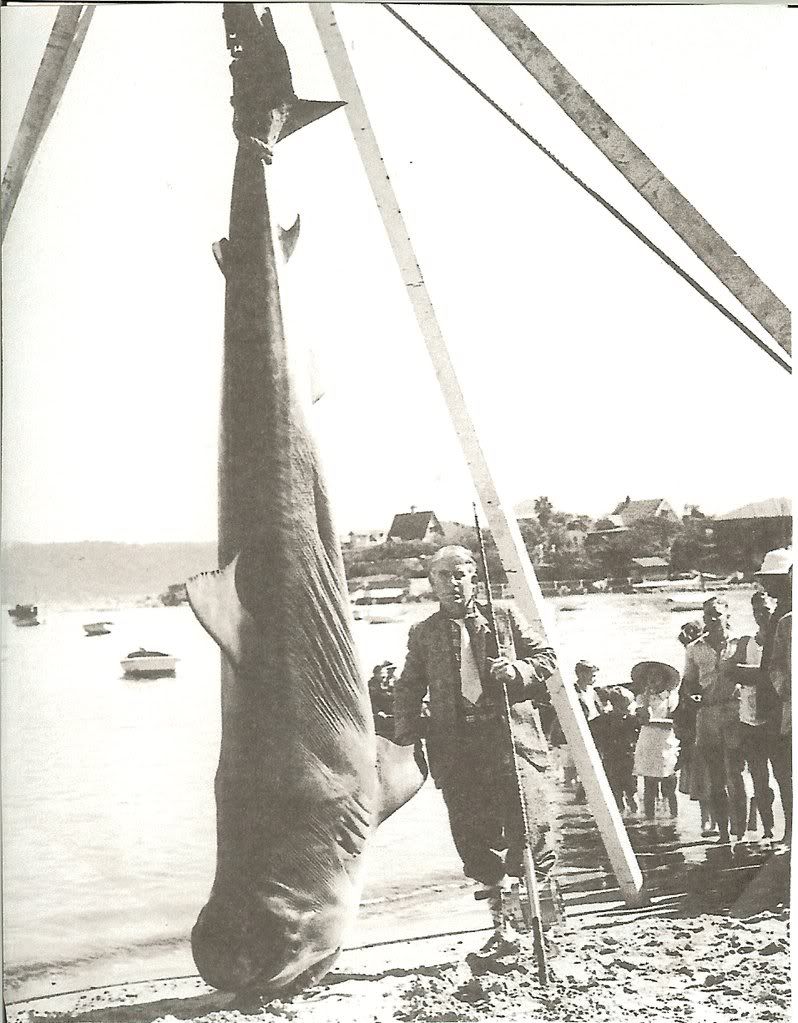
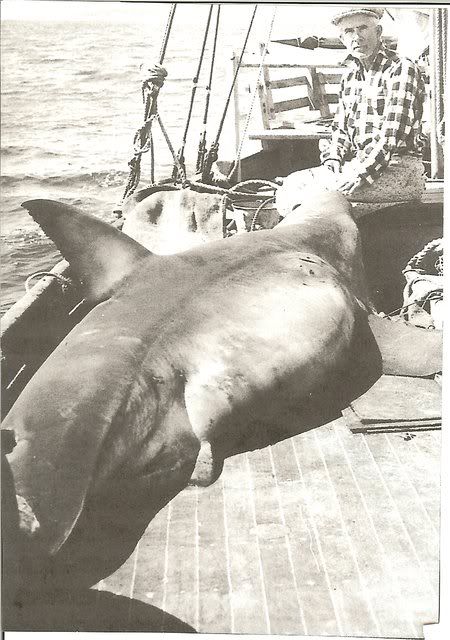
 when I see collections of lures it
always makes me wonder why would a fish grab one of those things??
when I see collections of lures it
always makes me wonder why would a fish grab one of those things??